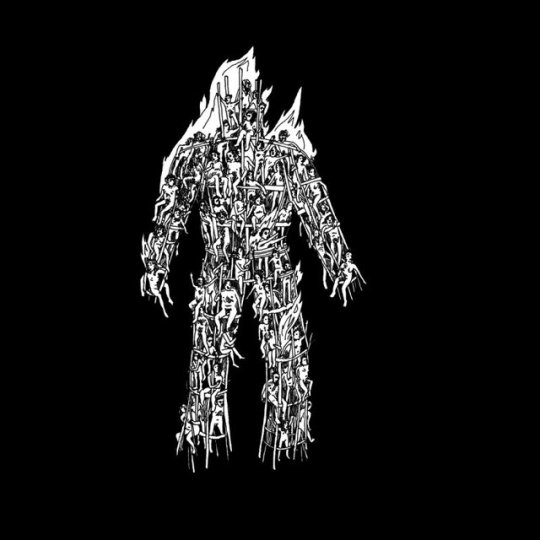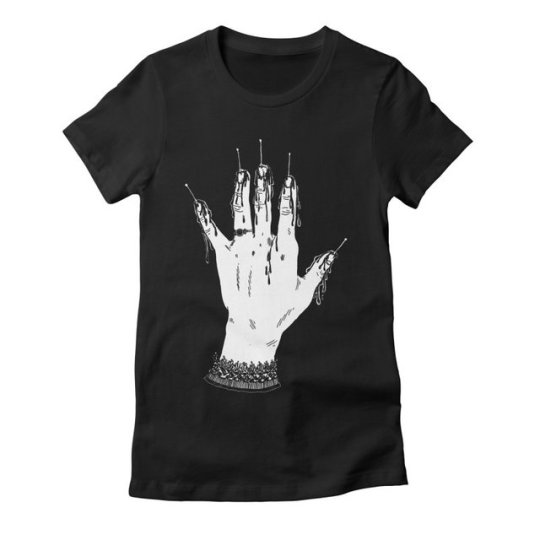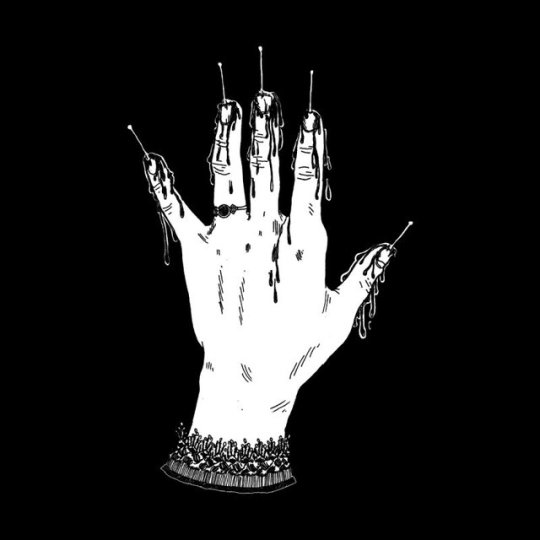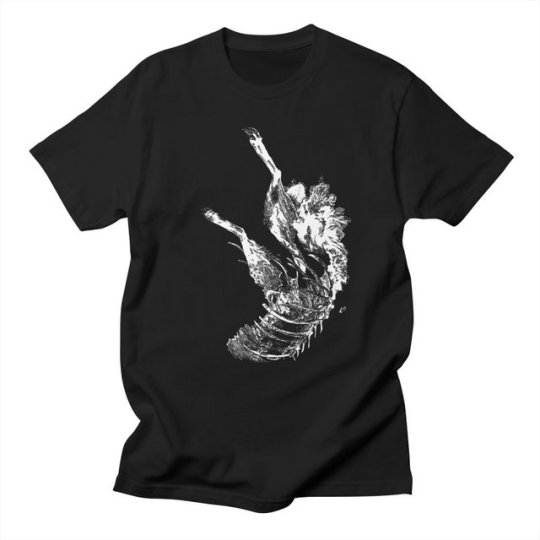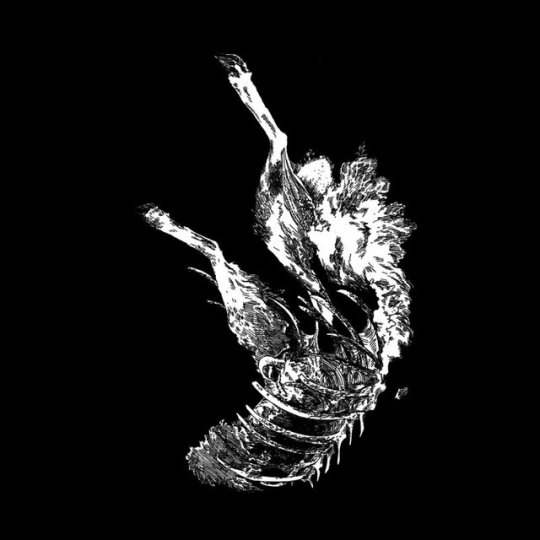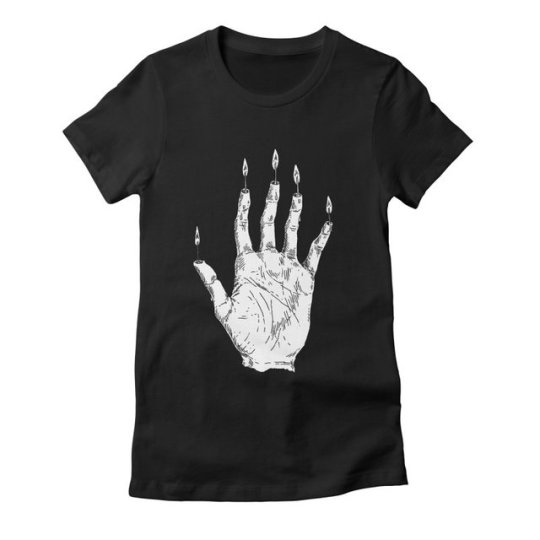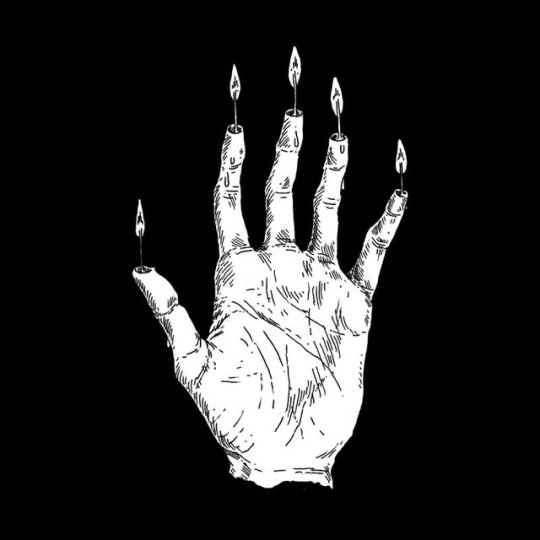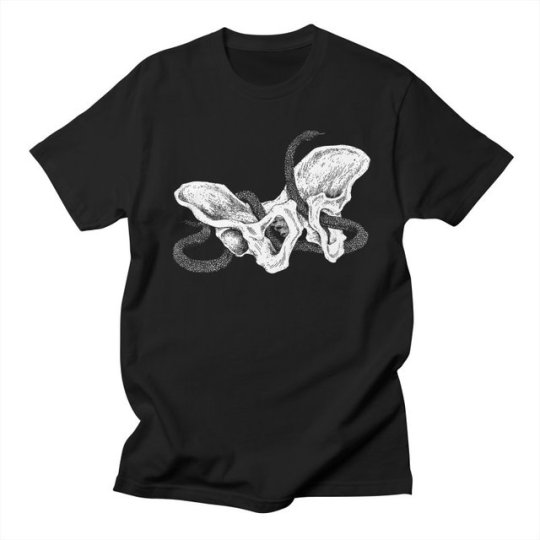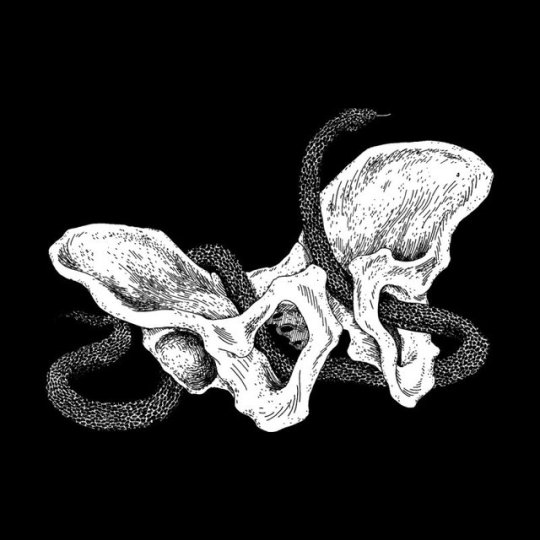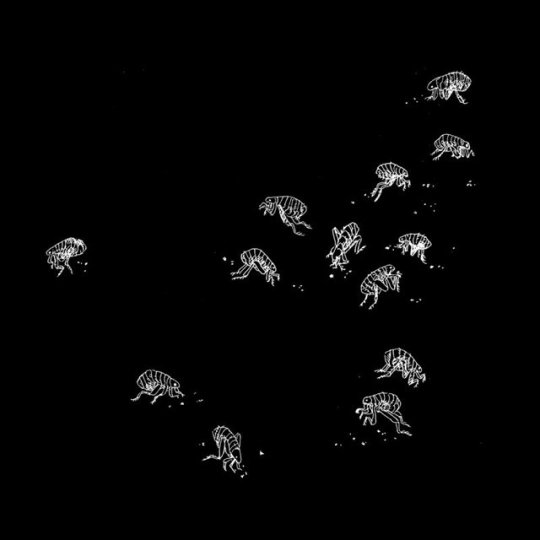Posts Tagged ‘horror’
“Dark” thoughts, Season One, Episode Three: “Past and Present”
December 5, 2017“Past and Present,” the aptly named third episode of Dark, continues its predecessors’ pattern of being hella reminiscent of a past genre work. In this case it’s Richard Kelly’s melancholic cult-classic science fiction film Donnie Darko, which the episode echoes in ways that feel more like homage than out-and-out swipes.
Yes, Mikkel has indeed been transported back in time through some kind of “crossing” (to borrow the term from Jonas’s late father’s map) in the caverns outside of town. After his unpleasant run-in with his parents and grandmother — the former are assholes, the latter is too distraught by her missing son Mads to do anything but grab the kid and beg him for information — he wanders to his school, only decades in the past. As he wanders around in a skeleton costume that looks like the one Donnie wore in the film except a few sizes smaller, the totally-’80s style of the town’s teens are paraded in front of the camera while a Tears for Fears song plays on the soundtrack (“Shout” here, “Head Over Heels” in the movie).
Would it be nice if shows stopped doing this kind of thing? Even good shows? Yes. The Punisher, for example, was strong enough on its own for its in-your-face (ahem) borrowing from the climax of 28 Days Later… in its penultimate episode to feel completely unnecessary, though perhaps not ethically or creatively ruinous. And Dark has enough going on to render this hat tip superfluous. Admittedly, though, the line between homage and theft is a blurry one, particularly in horror, a genre more in conversation with itself than any other. I could rattle off scene-by-scene comparisons in, say, Get Out or The Descent with the movies their filmmakers clearly know and love. But those two films are animated by a spirit that is unmistakably their own. Dark isn’t at that level, but it’s operating with enough sophistication to provide context for nods to its antecedents, instead of simply constructing itself out of nothing but such nods.
“Dark” thoughts, Season One, Episode Two: “Lies”
December 5, 2017Two episodes in and Dark is reminding me of a different touchstone in recent zeitgeisty supernaturally-tinged murder mysteries: True Detective Season One. Co-creator/director Baran bo Odar’s style is not far removed at all from TD‘s original helmer Cary Joji Fukunaga: wide, stately shots of the imposing yet beautiful natural landscape, deep greens, lots of tree imagery, the occasional crazy conspiracy wall. Throw in references to time as circular — “yesterday, today, and tomorrow are not consecutive; they are connected in a neverending circle,” as the pilot’s cold open put it — and you half expect local cop Ulrich Nielsen to call Rust Cohle in for a consult. None of this is blow-you-away amazing, or all that original (duh), but Dark creates a vibe for itself and deploys it effectively, and doesn’t require you to think back fondly on stuff you loved as a kid to do so, unlike certain other shows we could mention.
“Dark” thoughts, Season One, Episode One: “Secrets”
December 1, 2017The opening credits for Dark, Netflix’s first German-language original series, are simple but striking. Eschewing the “here is a significant object and/or an image of one of the cast members’ faces, slowly moving through a black field, with some cool coloring” technique beloved by so many shows for the past few years, the title sequence reflects moments seemingly plucked from throughout the series back on one another, symmetrically — the mirror effect from “When Doves Cry,” basically. Like a kaleidoscopic rorschach test, it renders the familiar suddenly weird and angular as if it’s being sucked into or ejected from an invisible portal in the middle of the frame, simply by repeating what you see and smushing it back in on itself.
If that ain’t the Netflix model, I don’t know what is.
Created by Jantje Friese and Baran bo Odar and directed in its entirety by bo Odar, Dark sure feels familiar. “Secrets,” its series premiere, is set in a small town surrounded by a forest that borders a nuclear power plant, where teenagers and their adult parents are forced to come to grips with the unexplained disappearance of a young boy. And based on a brief glimpse we’re given of the plight of a previously vanished teenager, it seems he might be subjected to strange psychological and physical experiments designed by a mysterious lone captor. In other words, if you watched Stranger Things and The OA, this is Recommended for You: The Series.
Yet Dark does not feel nearly as derivative as it could, or perhaps even should. For starters, it’s dealing with much more emotionally fraught material than Stranger Things, the show to which it will no doubt most frequently be compared. (Including by me, apparently.)
I’m covering Dark for Decider, starting with my review of the series premiere. Could be a pip, could be a pip.
“The Punisher” thoughts, Season One, Episode Eleven: “Danger Close”
November 28, 2017When I said in my review of the previous episode that Frank’s hotel battle was the all-out action extravaganza we were waiting for, I now realize I was wrong. It’s not action that a Punisher show promises—it’s punishment. And punishment is what we get. From director Kevin Hook’s eerie establishing shots of his nearly-abandoned headquarters’ empty rooms and corridors through the moment Frank suits up in his skull-emblazoned armor and into the ensuing massacre itself, the show positions Frank as an executioner rather than a soldier.
And he’s starring not in an adventure film but a horror flick. The way Castle dispatches the first few goons one by one, emerging from behind as if he’s a part of the walls themselves that somehow came alive, evokes the slaughter of the Colonial Marines when they enter the hive in Aliens. The industrial-basement setting is obviously a favorite of any number of forgettable genre flicks and shows by now, but when you factor in the gore and sadism you’re not far removed from mid-‘00s torture porn like Saw or Hostel. Meanwhile, Frank’s imposing physical comportment and even some of the music cues (I swear I heard a few Friday the 13th-style “chh chh chh”s) are straight-up slasher stuff, even before you see him walking around with a severed head.
Oh yeah, did I not mention the severed head? Maybe I should have led with that.
Frank Castle may draw on, and parallel, a long tradition of violent macho men famous during the character’s initial flourishing in the ‘80s and ‘90s. But neither John McClane nor John Rambo nor even the Terminator ever severed all the muscles in a man’s legs, allowing him to crawl across the floor leaving a snail trail of blood before finally plugging him in the head. The point is that while Frank’s rampage is thrilling in the sense of getting your blood up, you’ll never mistake it for anything but murder, as prolonged and ugly as it gets.
I reviewed the extremely violent eleventh episode of The Punisher for Decider.
Sean & Julia’s Cyber Monday Sale
November 27, 2017

All of the books by my brilliant partner Julia Gfrörer are 25% off at her Etsy store, today only. This is a filthily obscene deal for incredible work. For the record, this sale includes three collaborations with me: the anthology MIRROR MIRROR II and the pornographic Edgar Allan Poe adaptations (!) IN PACE REQUIESCAT and THE HIDEOUS DROPPING OFF OF THE VEIL. If you enjoy my writing you may like them as well!
Also, everything in Julia’s Threadless store (t-shirts, hoodies, tote bags, and more) is 20-30% off today only, with free shipping on orders of $45 or more if you use code “CHEER83687d”. Again, this is an insanely good deal!
Wonderland Episode 107: Tropes and Traps in Culture
November 15, 2017I’m a guest on episode 7 of Wonderland, a new podcast series about popular culture as a potential vehicle for political change. I spoke with hosts Bridgit Antoinette Evans & Tracy Van Slyke and my fellow guest Nayantara Sen about the storytelling pitfalls television falls into, and how climbing out of them is an opportunity to both tell better stories and do better political work within them. The conversation is a lot of fun, and the whole series is up all at once, so if you like what you hear, binge the whole thing!
A spoilery complaint about Twin Peaks discourse
November 9, 2017this concerns the final episode. after the jump
“Rolling Stone had some great ones”
November 9, 2017Did I not mention that Kyle MacLachlan read and enjoyed my weekly Twin Peaks reviews for Rolling Stone?
31 October T-Shirts by Julia Gfrörer, Day 31: Wicker Man
November 3, 201731 October T-Shirts by Julia Gfrörer, Day 30: Torture Hand
November 3, 201731 October T-Shirts by Julia Gfrörer, Day 27: Aurochs Bones
November 3, 2017BLACK FRIDAY II: HALLOWEEN MIX 2017
October 27, 201731 Days of October T-Shirts, Day 25: Hand of Glory
October 26, 2017“Mindhunter” thoughts, Season One, Episode Ten
October 25, 2017Holden’s meeting with Ed Kemper, who attempts suicide and names Ford as his medical proxy in order to force another meeting, is the first time any of his conversations with murderers has felt like something out of a serial-killer-as-supervillain movie. It’s not actor Cameron Britton’s fault—he plays Kemper with the same unnervingly conversational affect as ever. Rather, it’s the mechanics of the meeting: revealing the stitches from his suicide attempt like he’s a breath away from one of the Joker’s “Do you wanna know how I got these scars?” speeches, leaping from his hospital bed with cat-like reflexes, threatening to murder Holden and make him akin to the “spirit wives” he gained when he killed his previous victims, then reversing course and hugging Holden, thanking him for his honesty. When Holden says he doesn’t know why he came, it turns Kemper into a criminal mastermind, luring the FBI’s best and brightest into a potential deathtrap just to show he could. I’m sure it’s supposed to say something about Holden’s increasingly agitated state of mind, but it just makes him look dumb and indecisive, two things he’s never been.
The follow-up is even more of a misfire. The instant Holden hits the door out of Kemper’s hospital room, Led Zeppelin’s “In the Light” kicks in. The song’s creepy-cool John Paul Jones synthesizer opening had been used to great effect during Holden’s flight to California, but this time the track is fast-forwarded to Jimmy Page’s triumphant, upward-climbing riff. The transition is so abrupt, the musical sentiment so poorly matched to the moment, that I actually laughed out loud—yet that’s not even the half of it. Holden staggers down the hallway and collapses, in the grips of a full-fledged panic attack so severe he thinks he’s dying. As the hospital staff frantically tries to aid him, he hears the voices of other characters in his head, reliving times they called him on his bullshit and warned him about his behavior: Bill, Shepard, Wendy, Kemper, even Principal Wade. “Wait,” you may be thinking, “you mean like the ‘I made my family disappear’ scene in Home Alone?” Yes, exactly like the “I made my family disappear” scene in Home Alone. Add a few floating-head visions and a “You’re what the French call les incompétents” and not even David Fincher and Chris Columbus could tell the difference. The device is so hackneyed it comes across like a joke from a children’s comedy.
Worse, it’s unnecessary. Did we really need to hear people telling Holden he fucked up for us to understand, while watching him have a panic attack brought on by a serial killer who took advantage of him and could easily have murdered him, that Holden fucked up? I can’t remember the last time I saw a season finale swing and miss this hard.
I reviewed the season finale of Mindhunter, which I did not care for, for the A.V. Club.
30 Movies to Watch If You Like ‘Stranger Things’ [or Don’t!]
October 25, 2017The Last Unicorn (1982)
One of the most beautiful, melancholy, magical, and genuinely adult animated features in American film history. This adaptation of fantasist Peter S. Beagle’s novel comes to us courtesy of Rankin/Bass Productions and Japanese animation studio Topcraft — the former responsible for the stop-motion Christmas classics Rudolph the Red-Nosed Reindeer and Santa Claus Is Comin’ to Town, the latter eventually evolving into Hayao Miyazaki’s Studio Ghibli. Together, they produced the J.R.R. Tolkien cartoons The Hobbit and The Return of the King, plus this gut-punch of a film, about a unicorn who becomes trapped in the body of a young human woman. With a body-horror subtext worthy of Cronenberg and a ridiculously impressive voice cast (Mia Farrow, Jeff Bridges, Christopher Lee, Angela Lansbury, and Alan Arkin), it’s like a cross between Stranger Things and a story from the Dungeons & Dragons game its characters play.
Paperhouse (1988)
Directed by Bernard Rose — who would later adapt Hellraiser writer-director Clive Barker’s short story “The Forbidden” into the acclaimed urban-horror film Candyman — this harrowing supernatural/surrealist film centers on an 11-year-old girl who discovers her dreams and drawings are coming to life and consuming her reality. She’s got to figure out how to take charge and reassert control. Paperhouse is what I think of when Stranger Things is at its best.
Recast the relationship between Eleven and Mike Wheeler as a tragedy instead of a heroic fantasy, and you might wind up with this morbid proto-romance between a bullied kid and the young vampire who simultaneously befriends, protects, and uses him. There’s stuff going on here about abuse and loneliness, for characters of all ages, that digs way deeper than anything Stranger Things has done; if Netflix’s series is a 101 entry-level course, this is graduate work.
31 October T-Shirts by Julia Gfrörer, Day 23: Serpent Rampant
October 25, 2017“Mindhunter” thoughts, Season One, Episode Nine
October 23, 2017For the Behavioral Science Unit, it was the best of times, it was the worst of times. The penultimate episode of Mindhunter Season 1 shows the team operating at the peak of their powers, working in in tandem to create the term for which they’ll go down in history: “serial killer.” It also depicts faultlines forming that could jeopardize the whole project (if this weren’t verifiable historical fiction, anyway). If you’ve been following along, it’s not hard to understand why the former aspect of “Episode 9” works much effectively than the latter. Mindhunter is always better when its characters are all on the same side.
The “serial killer” scene is the most satisfying example of this phenomenon yet—a conference-room scene between Holden Ford, Greg Smith, Bill Tench, and Wendy Carr that feels like watching a tight jazz quartet trade eights. Wendy tries to come up with a term for murderers who carefully prepare for their kills versus those who go on a spontaneous rampage. Smith asks if that isn’t simply organized versus disorganized killers. Wendy says, no, that refers to the process during the crime, not the pattern behind it. Killers like Charles Whitman or Richard Speck, she says, take random victims during rapid-fire rampages, so their existing term of art “sequence killer” doesn’t work. “Whitman was on a spree,” Holden says, with Wendy and Greg backing him up. Bill agrees too, but then expresses doubt about the “sequence killer” label for a killer like Ed Kemper: “It feels too…cadenced,” he explains, starting to actually sound like a musician. Debbie thinks he might be on to something. “It should feel like a long story,” Holden follows up, “continually updated.” “A series of killings,” Bill replies. “Serial?” Holden murmurs. “Serial murderer?” Greg suggests. “Serial killer?” Bill says, refining the concept, and you can see on everyone’s face that he’s hit the mark. “That’s better,” Wendy says, impressed. “Let’s see if it sticks.” Yeah, let’s see!
31 October T-Shirts by Julia Gfrörer, Day 21: Fleabag
October 23, 2017“Mindhunter” thoughts, Season One, Episode Eight
October 23, 2017For Mindhunter to succeed, its investigations have to be successful too. That doesn’t mean Holden, Bill, and Wendy need to solve every case or understand every unique pathology they encounter. It simply means that the temperament and technique that help them produce their best work — the blend of curiosity, cooperation, openness, and uncertainty I spelled out last time, during an episode where those traits were largely absent — help the show produce its best work as well. Given what came before, “Episode 8” makes the biggest leap in that direction since the series began, in what for my money is its most riveting and revealing interview with a serial killer to date.
“Mindhunter” thoughts, Season One, Episode Seven
October 21, 2017To paraphrase the great Yakov Smirnov, on Mindhunter, case cracks you!
I reviewed episode 7 of Mindhunter, in which the team meets cartoonishly nasty serial killer Jerry Brudos and starts to lose their shit because of it, for the A.V. Club. I get why the show did what it did here—I just don’t enjoy it as much.



